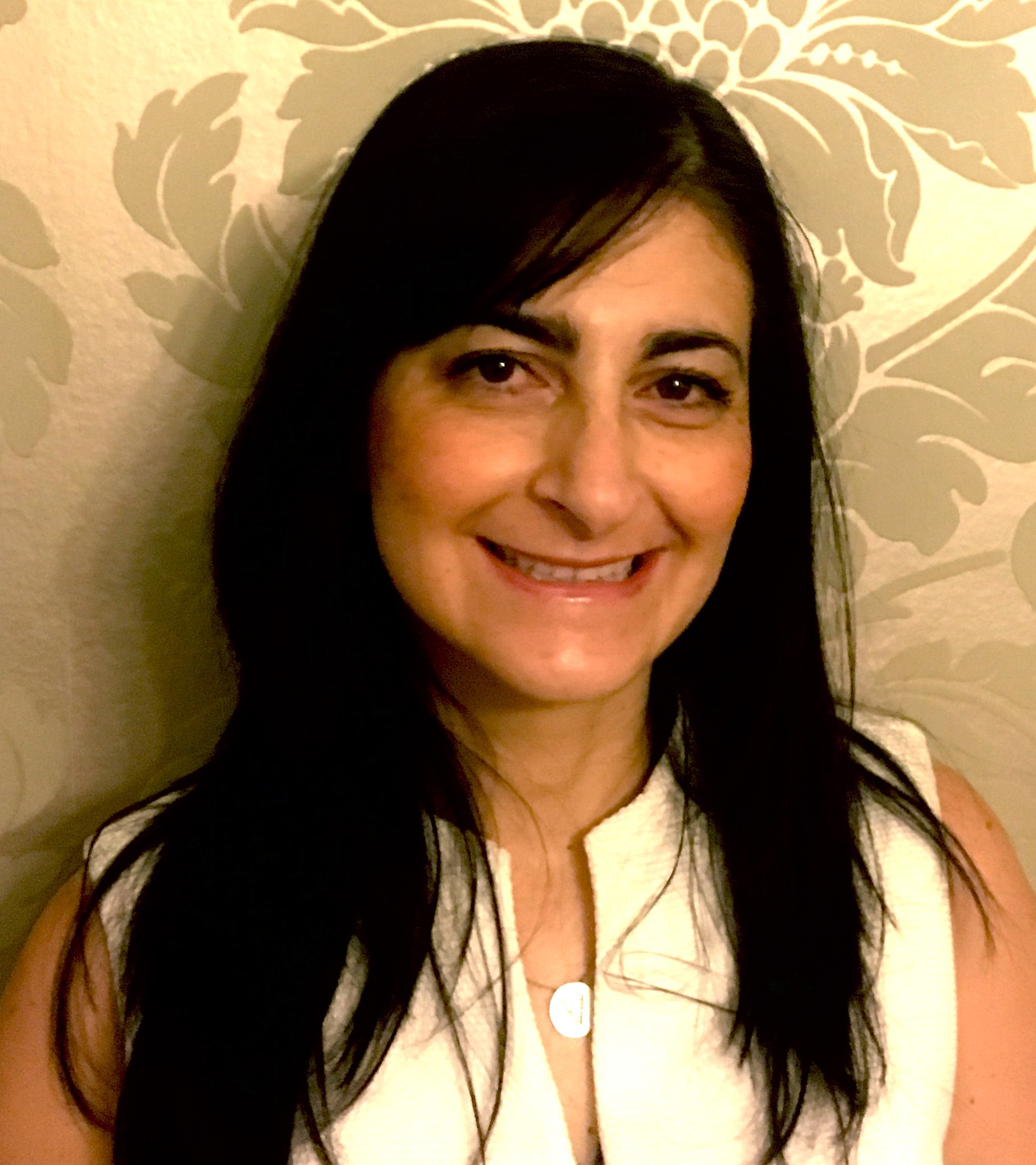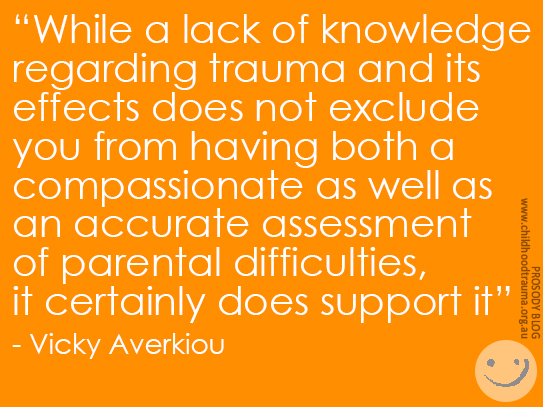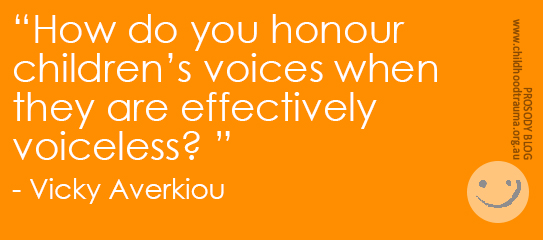
Ethical Dilemmas in Child Protection Practice: A Tale of Two Stories

This blog article was authored by Vicky Averkiou.
Vicky has twelve years experience in child protection. She has been a Casework Specialist since 2010 in various offices and districts.
 Decision-making in child protection is complex. There are so many decisions that are made on a daily basis, often made in the context of competing priorities, increased productivity pressures, and persistent turnover of staff. No one can question how tough child protection practitioners can have it. Nor must we make light of the gravity of the decisions that are being made, some of which, if truth be told, would crush most people under the enormity of the potential consequences they can have on children’s and their families’ lives. Is a child in danger? Do they need to come into care? What intervention does a family need so that the children are safe? Do they require statutory intervention? How long do we keep working with families without risk being mitigated? At what point is it in a child’s best interests for them to return to their family of origin?
Decision-making in child protection is complex. There are so many decisions that are made on a daily basis, often made in the context of competing priorities, increased productivity pressures, and persistent turnover of staff. No one can question how tough child protection practitioners can have it. Nor must we make light of the gravity of the decisions that are being made, some of which, if truth be told, would crush most people under the enormity of the potential consequences they can have on children’s and their families’ lives. Is a child in danger? Do they need to come into care? What intervention does a family need so that the children are safe? Do they require statutory intervention? How long do we keep working with families without risk being mitigated? At what point is it in a child’s best interests for them to return to their family of origin?
In NSW, Family and Community Services (FACS), as the statutory child protection agency, has implemented Structured Decision Making (SDM) for much of these decision points. And while SDM tools do much to increase consistency and validity of child protection assessments, they can never take away the human element in making decisions. Nor should they. The catchcry is that people make decisions, not tools. And nowhere is this highlighted more poignantly than in child protection. Their value is as their name implies: structuring, or scaffolding if you will, the information you need in order to make decisions at certain points of our involvement with a family.
In order to support practice, each Community Services Centre (CSC) has access to a Casework Specialist, a senior child protection practitioner who helps increase staff capacity and practice quality through coaching, training, consultation, and quality assurance. As a Casework Specialist, I am most frequently consulted on the application of the SDM tools when assessing safety of and risk to children. So I know all too well the vagaries that can afflict child protection assessments, whether through a misapplication of the tool, a misunderstanding of the definitions, or whether a more serious misconception of the family’s issues. Not that I am implying that decisions are frequently wrong. Just that with families with the most complex difficulties, even the application of standardised tools can similarly become complex and require consideration and, often, consultation.
A tale of two stories
The validity of our assessments are dependent upon the quality of the information we have gathered about a family. And this, in turn, is dependent upon the quality of our engagement with the family, our ability to understand the family’s story and to conceptualise what this means for this child. It takes skill and expertise in order to do this well. What happens when parents’ accounts for events vary with children’s accounts? What about when the most vulnerable children are non-verbal or have limited verbal ability?
It is the unfortunate finding that child protection practitioners tend to believe children over parents only if it fits with their existing views of a family[1]. Sometimes parents’ version of events presented to us is more palatable, less distressing, and does much to assuage our concerns. For if the child’s version of events was true, this truly would challenge all our abilities to make sense of how parents can cause such harm to their children, especially children they genuinely love. How can we reconcile our compassion and sympathy for these parents, who had clearly been disadvantaged by life, with reports of behaviour that was clearly damaging to their child?
Adopting a trauma-informed perspective helps me to be more nuanced in my assessment of parents’ difficulties.  While a lack of knowledge regarding trauma and its effects does not exclude you from having both a compassionate as well as an accurate assessment of parental difficulties, it certainly does support it. My review of parents’ own experiences of childhood abuse and neglect afford me an even greater degree of compassion and understanding regarding their parenting struggles, as well as an explanation for them. We know that unresolved trauma leads to parents experiencing an array of difficulties in being able to care for their children, usually resulting in the transgenerational transmission of trauma[2]. While their own childhood experiences of developmental trauma do not excuse their behaviour, it enables us to have both compassion for their experiences and difficulties, as well as an understanding of what underlies them. We can understand that parents can both mean well and have genuine love for their children, yet still be responsible for behaviour that is damaging to their children. And we can be better placed in understanding the types of intervention that they would truly benefit from.
While a lack of knowledge regarding trauma and its effects does not exclude you from having both a compassionate as well as an accurate assessment of parental difficulties, it certainly does support it. My review of parents’ own experiences of childhood abuse and neglect afford me an even greater degree of compassion and understanding regarding their parenting struggles, as well as an explanation for them. We know that unresolved trauma leads to parents experiencing an array of difficulties in being able to care for their children, usually resulting in the transgenerational transmission of trauma[2]. While their own childhood experiences of developmental trauma do not excuse their behaviour, it enables us to have both compassion for their experiences and difficulties, as well as an understanding of what underlies them. We can understand that parents can both mean well and have genuine love for their children, yet still be responsible for behaviour that is damaging to their children. And we can be better placed in understanding the types of intervention that they would truly benefit from.
“I think you should take me again.”
If we focussed only on the parents’ story, we could become lost in our empathy for them and our assessment of their behaviour become confused with our sympathy for them. This is where it is vital to understand as well as reflect upon the child’s lived experience, what it means for them to live on a daily basis with the legacy of their parents’ difficulties. Just as a trauma-informed perspective can increase compassion for parents who are struggling, so too can it support an understanding that children’s behaviour is a reflection of their environment and their unmet needs. This disallows an unacceptable level of tolerance of parental difficulties when children’s behaviours are particularly difficult[3]. A Casework Specialist can provide both the reflective space as well as an additional, dispassionate perspective that more easily allows for such consideration to take place. For, otherwise, it is too easy for children’s experiences to become lost in the busyness of the day.
 This can be especially challenging for non-verbal infants and children. How do you honour children’s voices when they are effectively voiceless? Such was the case when I was asked to conduct a formal consultation, a practice review, in relation to a family we were working with. While the eldest child, Jonathan[4], was aged seven at the time of my review, his verbal ability was severely limited. He had been diagnosed with severe expressive and receptive language delays as well as a moderate articulation disorder. This meant that he had significant difficulties talking as well as understanding what he was told. Additionally, what he could say was more difficult to understand because of difficulties in articulating words.
This can be especially challenging for non-verbal infants and children. How do you honour children’s voices when they are effectively voiceless? Such was the case when I was asked to conduct a formal consultation, a practice review, in relation to a family we were working with. While the eldest child, Jonathan[4], was aged seven at the time of my review, his verbal ability was severely limited. He had been diagnosed with severe expressive and receptive language delays as well as a moderate articulation disorder. This meant that he had significant difficulties talking as well as understanding what he was told. Additionally, what he could say was more difficult to understand because of difficulties in articulating words.
I had the opportunity to talk to Jonathan following a child protection report being received while I was conducting my review. This was the fifth report regarding facial bruising to either Jonathan or one of his younger siblings – the fourth to Jonathan himself. Jonathan and his siblings had also been subject to numerous reports of neglect. It was in fact assessed that the developmental delays Jonathan and his siblings experienced were due to the neglect they had experienced throughout their lives. In order to understand Jonathan, I required the assistance of his teacher to help ‘translate’ what he told me. It still amazes what he could say – what he did have language for and what he didn’t. Jonathan was able to clearly say, “Daddy punch”, just as he had three years earlier after sustaining a black eye. His other clearest communication was that he wanted to be removed. He stated, “I think you should take me again”, and then pointed to a picture of a happy face, indicating that this is how he would feel if he was to be removed.
I had to leave Jonathan there at school that day without ‘taking him again’ as he had requested. As a Casework Specialist, I can have influence over decisions, but I cannot make them. I did not doubt that he was unsafe. Jonathan did his best to tell me that. However, the decision was made that Jonathan’s verbal disclosure’s did not provide sufficient clarity that he was currently being harmed and therefore at ‘immediate risk of serious harm’. This was because we could not tell whether he was talking about a recent event or an event in the past. The burden of proof upon FaCS is, in these cases, much more onerous to casework staff to be able to demonstrate to the Children’s Court that the children need to come into care.
I often think back as to how confusing it must have been for Jonathan for us to leave him that day after he told us he was scared and wanted to come into care. He cannot know that I wrote a review report that may have influenced somewhat the decision that saw him ultimately come into care. Not when he came into care several months after I spoke to him. And while I was relieved that Jonathan and his siblings were now safe, this did not mean that their difficulties were over. We know that the care system can be flawed. The availability of carers – kinship or otherwise – who can provide the therapeutic care required to rehabilitate these children from the effects of trauma is severely limited relative to the need. But this cannot be a reason to leave children in unsafe circumstances with their families of origin. For this would be the ultimate ethical dilemma.
[1] Munro (1999; 2008)
[2] e.g. Donald & Jureidini, 2004; Jackson, Frederico, Jones, Walsh & Dounias; Killen, 2008; Siegel, 2008, 2012a; Siegel & Hartzell, 2014; Tarczon, 2012.
[3] Donald & Jureidini (2004).
[4] Names have been changed to protect confidentiality.
